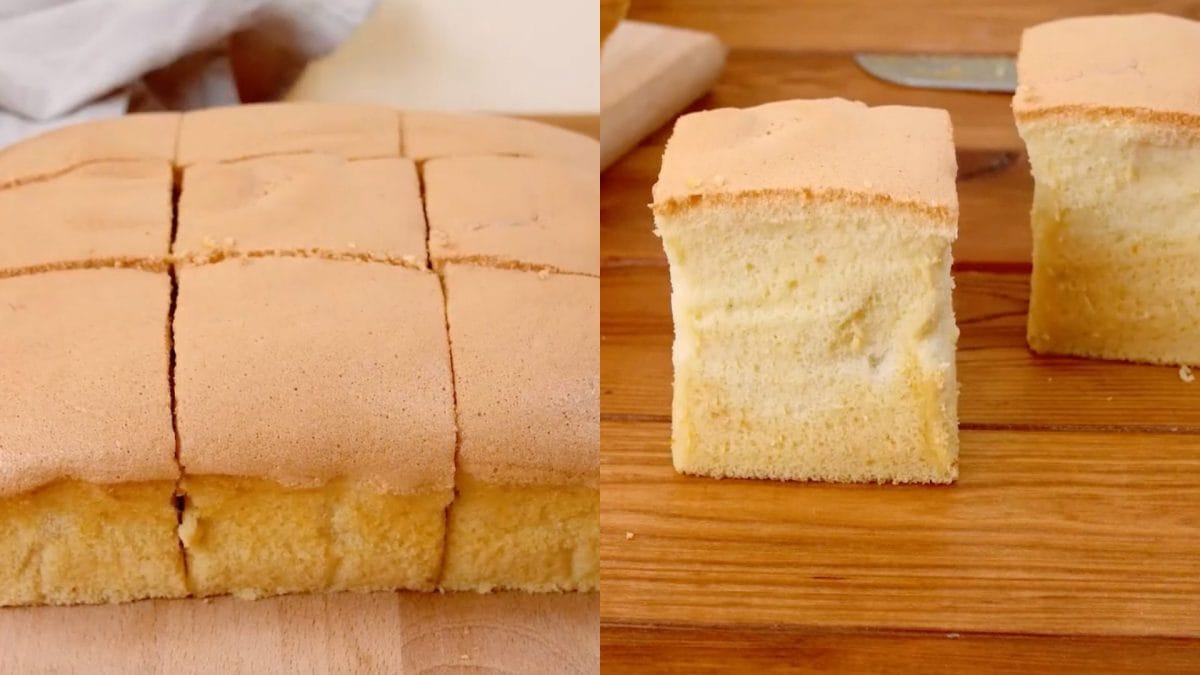
With its ethereal texture and vibrant citrus flavor, Orange Ogura Cake offers a delightful variation of traditional sponge cakes.
The preparation involves creating a delicate balance between whipped egg whites and a flavorful yolk mixture infused with fresh orange juice and zest. Baked using the steam-bake method, the result is a moist cake. Its subtle sweetness and refreshing citrus notes make it an ideal dessert for various occasions.
Whether you're a seasoned baker or a novice in the kitchen, the Orange Ogura Cake invites you to experience a piece of Malaysian culinary heritage, offering both a challenge and a reward in its creation.
What is Orange Ogura Cake?
Orange ogura cake is a hybrid sponge cake originating from Malaysia and inspired by Japanese techniques. Its name, "ogura," translates loosely to "great comfort," and that checks out.
What makes it special? It’s incredibly moist without relying on heaps of butter or oil and the orange variation adds brightness and character. While it might look humble, the technique behind it is all about precision and balance.
Pro Tips for the Best Orange Ogura Cake
- Cold eggs are a no-go. Let them sit out for at least 30 minutes before separating and using.
- Sift That Flour as it ensures a lump-free, smooth batter.
- Fold your meringue delicately, because overmixing deflates your batter.
- Resist the urge to crank the heat. Ogura cakes are sensitive souls that need gentle heat.
Can I Freeze Orange Ogura Cake?
While you can, it is not advisable. The delicate crumb can become gummy after thawing. If you must freeze it, wrap tightly in cling film and then foil. Thaw overnight in the fridge, and bring to room temp before serving.
Why Did My Cake Deflate?
This usually means your meringue wasn’t folded in properly or you opened the oven door too early. It could also be due to overbeating the egg whites or underbaking. Ogura cake needs a little finesse and lots of patience.
Can I Use Regular Flour?
Cake flour is preferred because it’s low in protein, which means a softer texture. You can substitute with all-purpose flour plus cornstarch, but results may vary.
What’s the Purpose of Dry Yeast?
It may seem unusual, but a touch of dry yeast helps to stabilize the batter and gives the cake a very subtle depth in flavor.
Why a Bain-Marie?
That’s just a fancy way of saying "steam bath." It keeps the oven moist and ensures even, gentle cooking. It’s essential for an ultra-soft, no-crust finish that ogura cakes are known for.
Ingredients
How to Make Orange Ogura Cake

Preheat your oven to 140°C (300°F) and line a 15x15 cm square pan with parchment paper. In a mixing bowl, whisk together the 3 egg yolks, 1 whole egg, and 40g of sugar until the mixture becomes pale and slightly thickened.
Preheat your oven to 140°C (300°F) and line a 15×15 cm square pan with parchment paper. In a mixing bowl, whisk together the 3 egg yolks, 1 whole egg, and 40g of sugar until the mixture becomes pale and slightly thickened.

Drizzle in the vegetable oil and mix well. Then, sift in the cake flour and gently whisk until smooth and stir in the orange juice and zest.
Drizzle in the vegetable oil and mix well. Then, sift in the cake flour and gently whisk until smooth and stir in the orange juice and zest.

In another bowl, beat the egg whites, gradually add the 50g sugar and whip until soft peaks form.
In another bowl, beat the egg whites, gradually add the 50g sugar and whip until soft peaks form.

Fold half of the meringue into the yolk batter to lighten it. Then pour leftover batter into the remaining meringue and fold until smooth and airy.
Fold half of the meringue into the yolk batter to lighten it. Then pour leftover batter into the remaining meringue and fold until smooth and airy.

Pour the batter into your pan and place it in a larger baking dish filled with hot water. Bake for 50 minutes and don’t open the oven during this time.
Pour the batter into your pan and place it in a larger baking dish filled with hot water. Bake for 50 minutes and don’t open the oven during this time.

Once baked, let the cake cool in the pan and slice into squares. Serve with tea or smug satisfaction.
Once baked, let the cake cool in the pan and slice into squares. Serve with tea or smug satisfaction.

;Resize,width=767;)
